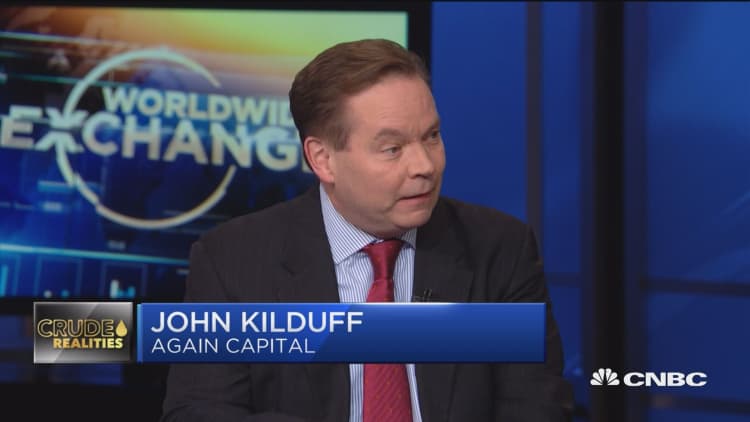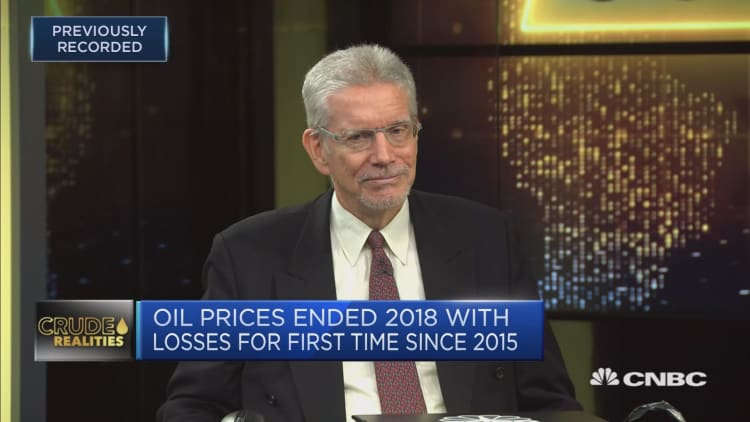Oil prices were higher on the first trading day of 2019, bolstered by signs of tighter supplies from Saudi Arabia that offset record output in the United States and Russia and weak economic data.
Crude futures jumped as much as 5 percent earlier in the session, but gave up some of those gains in afternoon trading.
U.S. West Texas Intermediate crude ended Wednesday's session at a two-week high, up $1.13, or 2.5 percent, to $46.54. Brent crude rose $1.13, or 2.1 percent, to $54.93 a barrel at 2:28 p.m. ET, after trading as low as $52.51 earlier.
Traders pointed to signs that Saudi Arabia is beginning to make good on vows to cut output after a swift fourth-quarter collapse in oil prices. Saudi exports in December fell by about half a million barrels per day to stand at 7.253 million bpd, according to tanker-tracking data from Bloomberg.
January marks the beginning of OPEC's agreement with 10 other oil-producing nations, including Russia, to cut production by 1.2 million bpd.

Figures from ClipperData have shown that loadings of Saudi crude on ships bound for the United States have been falling in recent months. The Saudis have used the price-boosting strategy in the past to shrink U.S. stockpiles, the most transparent and closely watched inventories in the world.
The "Saudis are trying to engineer a fall, if not plunge, in U.S. crude oil inventories to give the appearance of global tightness," said John Kilduff, founding partner at energy hedge fund Again Capital.
Oil prices rebounded shortly after WTI hit a session low at $44.35 a barrel and as the U.S. stock market reversed earlier losses.
"Typically in the beginning of a new quarter or new year you get new fresh money coming in. I think that's part of it," said Kilduff.
Earlier in the day, oil prices had slumped against a bearish backdrop. Russia reported that it pumped 11.16 million bpd in 2018, marking a post-Soviet-era record. This came just two days after the U.S. government figures showed the nation's output hit another all-time high in October at 11.54 million bpd.
However, while U.S. production hit a record for a fifth straight month, growth slowed considerably from September due to pipeline bottlenecks in the Permian basin region and Gulf of Mexico outages ahead of Hurricane Michael, Barclays analyst Michael Cohen noted.

"We expect a slowdown in the annual growth rate due to takeaway constraints in the Permian region and capital discipline focus among producers, especially in the wake of the sharp decline in oil prices recently," he said in a research note.
Crude futures posted an annual loss in 2018 for the first time since 2015, with WTI tumbling about 25 percent and Brent slipping nearly 20 percent. Prices collapsed in the fourth quarter on concerns about oversupply, as production surged and forecasters revised down expectations for demand growth.
Adding to concern about economic slowdown, a series of purchasing managers' indexes for December mostly showed declines or slowdowns in manufacturing activity across Asia — the main growth region for oil demand.
China issued its first batch of crude import quotas for 2019 on Wednesday at a lower volume than for the same batch a year ago, though expectations are for the volumes to climb later this year.
— Reuters contributed to this report.


